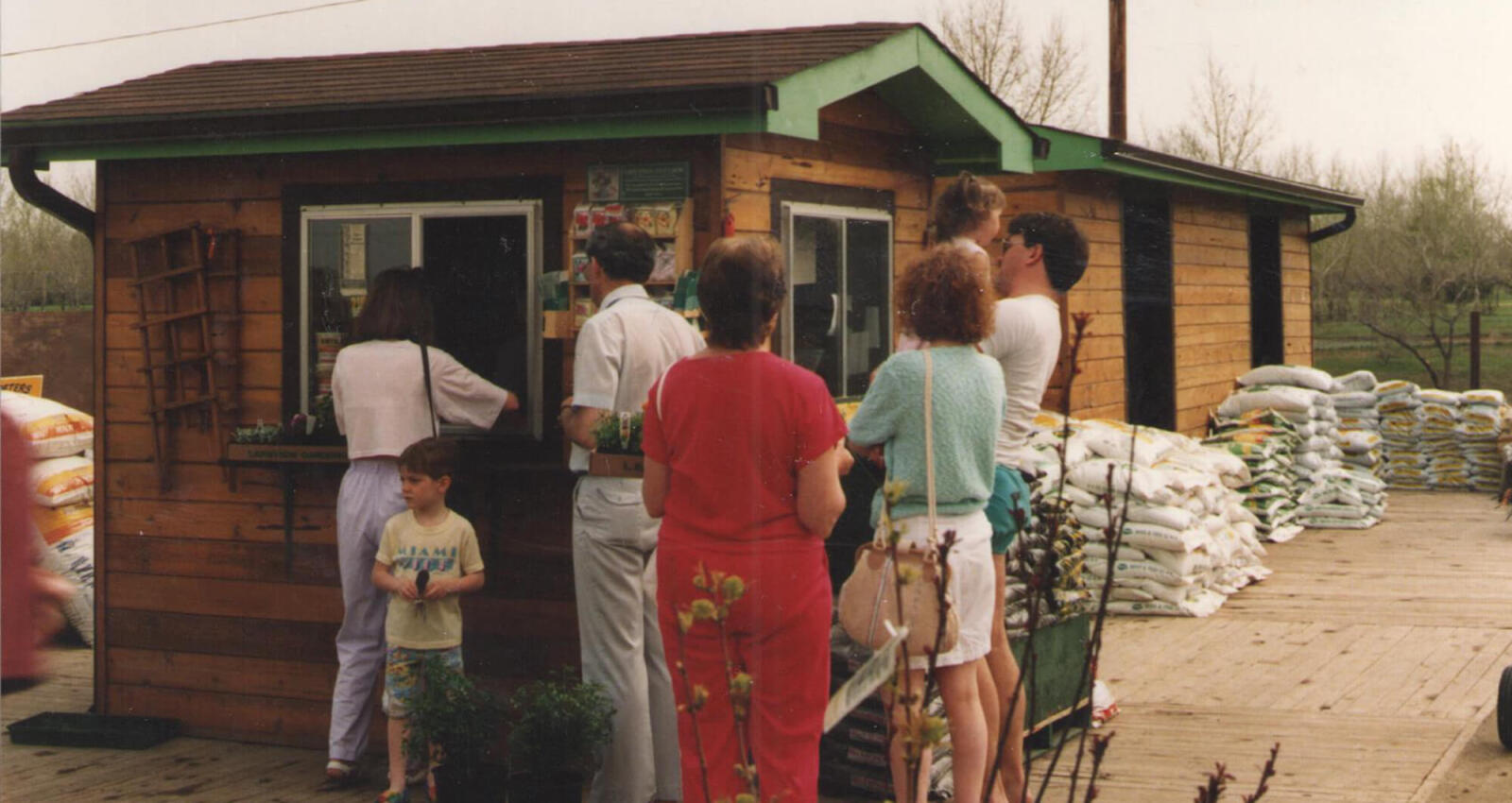May 4, 2021

Garden centre evolution
BY ROD McDONALD
 To some, a garden centre is a retail operation that has been with us forever and a day. Not true. Greenhouses and nurseries have existed for hundreds of years, but retail garden centres have their origins in the ‘60s and began to appear, in a noticeable fashion, in the late ‘70s.
To some, a garden centre is a retail operation that has been with us forever and a day. Not true. Greenhouses and nurseries have existed for hundreds of years, but retail garden centres have their origins in the ‘60s and began to appear, in a noticeable fashion, in the late ‘70s.When I was kid, in the ‘50s and ‘60s, growing up in Regina, Sask., my mother bought her seeds at the local, independent grocer. That was the norm. Others got their seeds from mail order catalogues.
The backyard “garden centre”
When we wanted bedding plants, we went to the local greenhouse, of which there were many choices. In those days there was often a small greenhouse set up in the backyard of a gardening enthusiast in the neighbourhood. Those greenhouses were usually hand-built and jerry rigged to operate with hoses running from the house and an old furnace for heat. They grew mainly vegetable transplants and the basic flowers like geraniums, marigolds and dusty miller. The varieties were predictable. They did not, as a rule, sell trees, shrubs or roses.If you wanted trees, shrubs or roses, you had to visit a nursery, usually out of town. At the nursery, nothing was potted. Everything, including perennials, was sold bare root. If you did not live close enough to a nursery, you ordered your bare root plant material from a catalogue and waited for it to arrive by mail, train or bus.
Finding hard goods such fertilizers or pots was not easy. The local hardware store would stock a few hard goods, but stock was generally limited to the spring months. Our local 700 sq. ft. hardware store, for example, sold peat moss. In the ‘70s and early ‘80s, that small store could move 800 bales of peat moss. It was an incredible amount.
June 1st? Gone Fishing!
When you visited your local greenhouse, if you asked the owner, he might sell you a sandwich bag filled with the fertilizer he used in his growing operations. Rarely did the greenhouses sell gardening supplies. They saw it, as their job, to sell plants in the month of May and to be closed by June 1st. It was rare for a greenhouse to be open in the month of June, and if it was, what was left was overgrown and of poor quality.There were no box stores at the time, only department stores and they were only involved in our trade on the periphery.
The concept of a one-stop retail operation, where you could purchase your bedding plants, trees and shrubs plus associated hard goods and care products, started out slowly. At first, it was often something as simple as a shed or lean-to attached to an existing greenhouse or nursery. Eventually, retail garden centres started opening up as free-standing operations that brought in their bedding plants and nursery stock from others. These stand-alone operations were not looked upon favourably by many of the growers in our trade. Some dismissed it as a terrible idea.
I often tell the story of a conversation I had around 1977. I was visiting an established nursery and I told one of the owners that my dream was to open a retail garden centre. He scoffed at my idea, explaining the public would never purchase plants from a business that was not a grower. I also said my dream was to have a year-round operation. Again, he dismissed my dream, explaining that “no one, absolutely no one, will buy plants after June 15.”
Earlier this year, I was part of a Zoom meeting of retail garden centre operators from across Canada. We assembled under the auspice of The CNLA Anniversary Project. It was a great experience to be with men and women who have spent 40-50 years in this trade of ours, or grown up in it. Our topic of discussion: the evolution of the garden centre.
History repeats itself
One of the themes that emerged from our meeting was the cycle of change. We discussed how our product mix changes, regularly, and how, on occasion, product lines come back in style. In the ‘80s we could not give peonies away and then in the nineties, we could not keep enough peonies in stock. They were flying out the door. There were years when we could move incredible numbers of evergreens but very few deciduous shrubs and then, that trend, reversed itself.All of us commented on how large the tropical/house plant market has been the last few years. Getting product from tropical growers has become more difficult as demand has outstripped supply. Karl Stensson of Sheridan Nurseries, based in Georgetown, Ont., reminded us of a similar situation in the ‘70s. I remember it as well.
Current trends
One of the major points of discussion the group had was the rise of buying and marketing groups for independents. These buying groups have allowed the independent to compete with the box stores. We now have access to pricing we could not achieve on our own.Social media has been another major change in the last 10 years. At one time, we relied upon newspapers, radio and television for advertising. Today, even small operations have a social media presence, which in many cases, is even better than those of the national companies. Many independent garden centres have large followings on social media and on their websites.
Times change and the general observation, from those who have thrived over the years, is the importance of staying ahead of the curve. Managing with the curve keeps all of us on the road to success.
Rod McDonald owned and operated Lakeview Gardens, a successful garden centre/landscape firm in Regina, Sask., for 28 years. He now works full-time in the world of fine arts, writing, acting and producing in film, television and stage.